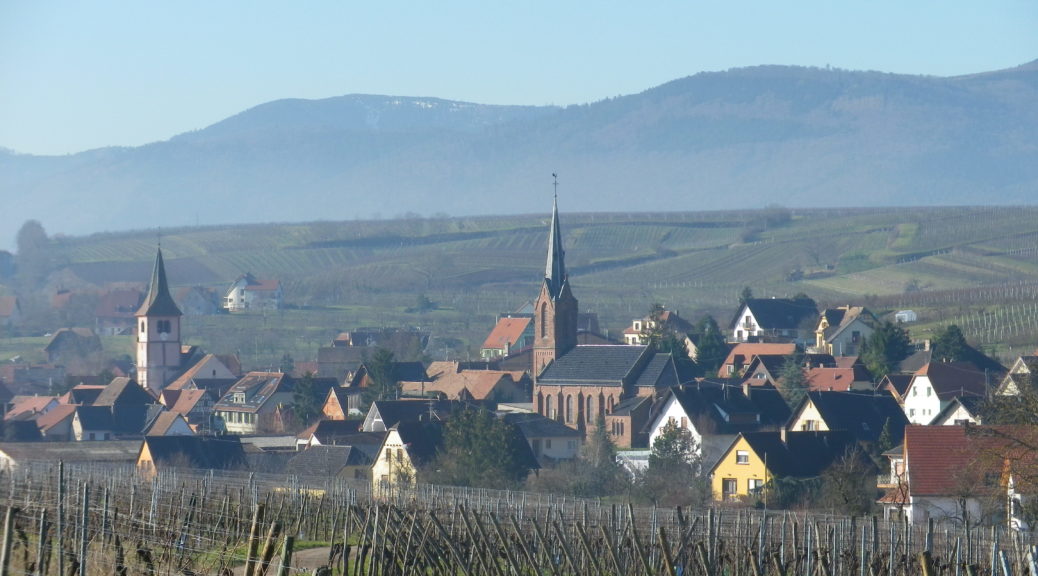In a brilliant tour de force, the regional authorities in the department of Bas Rhin, Alsace, have done much to promote wine tourism in this often-overlooked corner of the Alsatian Wine Route. In addition to an up-to-date wine cooperative (and shop with liberal hours), featuring some of its local Grand Cru wines, they have developed a series of wine-themed hiking circuits. There are four circuits, ranging from 17 kilometers to 13.6 kilometers. These circuits all share at least one section. To hike the outside edge of them all results in a hike of 35 kilometers. My kind of tourism. So I selected the circuit that went closest to the cooperative: the Loejele Circuit.
As this is a circuit, it is possible to begin anywhere along it, but I chose Wangen because it was closest to the highway. It is a small village, but one with its medieval walls still partially intact. In fact, my start took me out one of the gates, past the cemetery and into the vineyards in rapid succession.
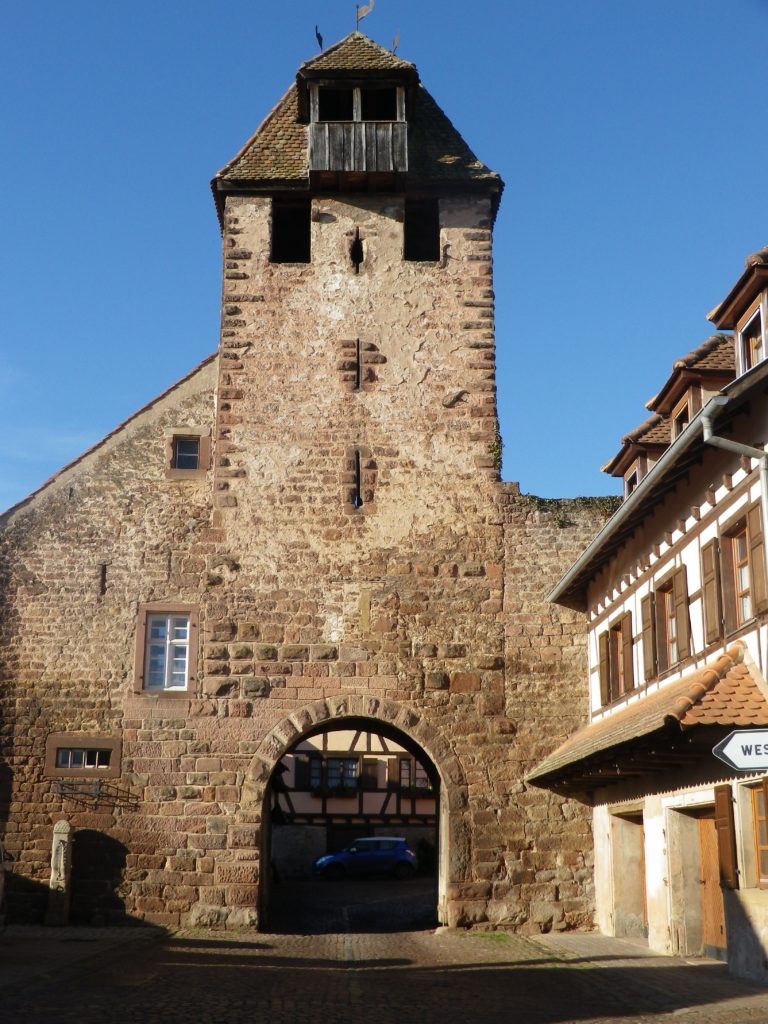
Soon I was on familiar ground, crossing the Velo-Route du Vignoble d’Alsace bike trail (a dedicated bike path in this section) which roughly follows the Alsatian Wine Route. Crossing the Kohbach creek, I headed into Traenheim. It is home not only to the Cave du Roi Dagobert wine cooperative, but also to an excellent restaurant, the (difficult-to-pronounce) Loejelguecker.
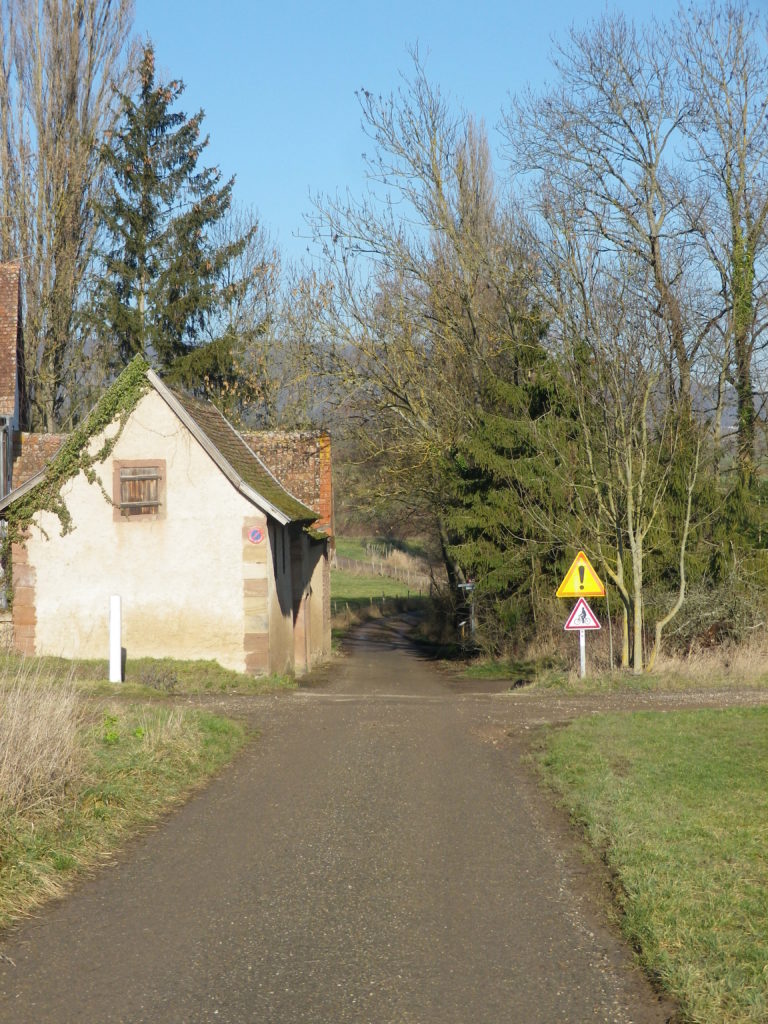
Loejele is the Alsatian word for small, portable cask, hence ideal for carrying beverages (such as wine). A Guecker in dialect (and in idiomatic German) refers to someone who eyes something obtrusively. I got a mental image of the wine-happy party-goer who was constantly looking for another refill before the cask ran out. Traenheim takes its wine seriously, and has established a short wine education circuit trail, along which the Loejele circuit followed a section.
After Balbronn came the village of Westhoffen. There, near the top of the town, tucked in a corner of the town walls, was an intact synagogue. On both sides of the Rhine, there was a significant Jewish population. Alsace even has a tourism program devoted to this aspect of its history (Le Judaisme Alsacien)
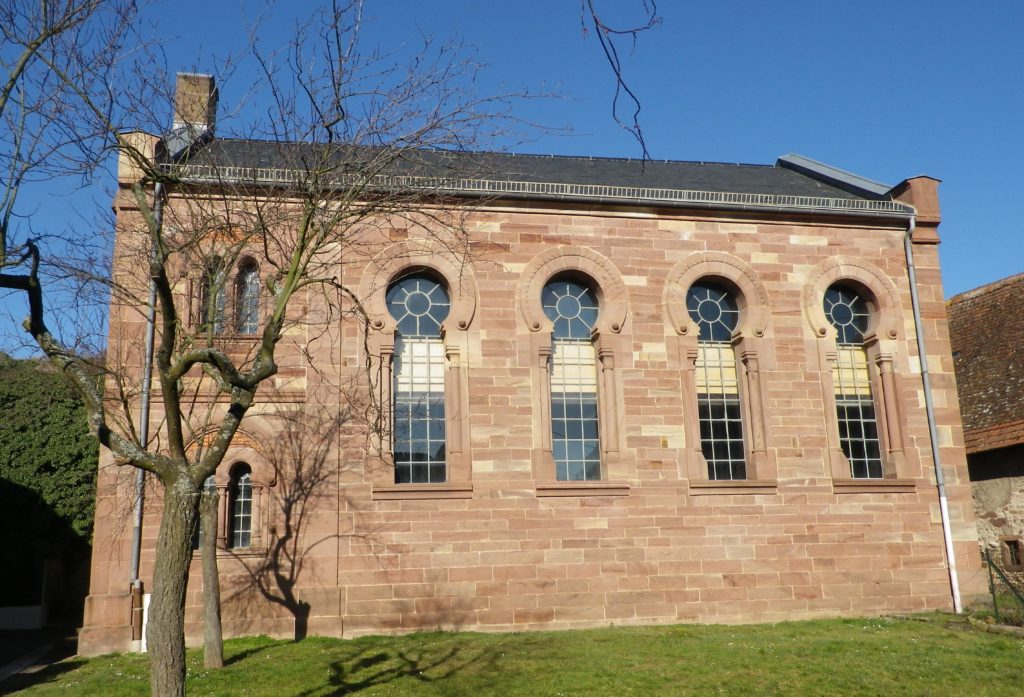
I was fortunate that the winter day was so mild. The previous week had seen snow and low cloud cover, but most of the snow was gone from the trail, and the sky was mostly cloudless, leaving delightful views of the snow-covered Vosges mountain tops not too far away. The trail lead toward them as it headed up a steep vineyard to the tree line. One great aspect of this trail was its varied landscape, and its several hills. Approaching the site known as La Gloriette, there were marvelous views south, and east toward Strasbourg, onto the Rhine River valley.
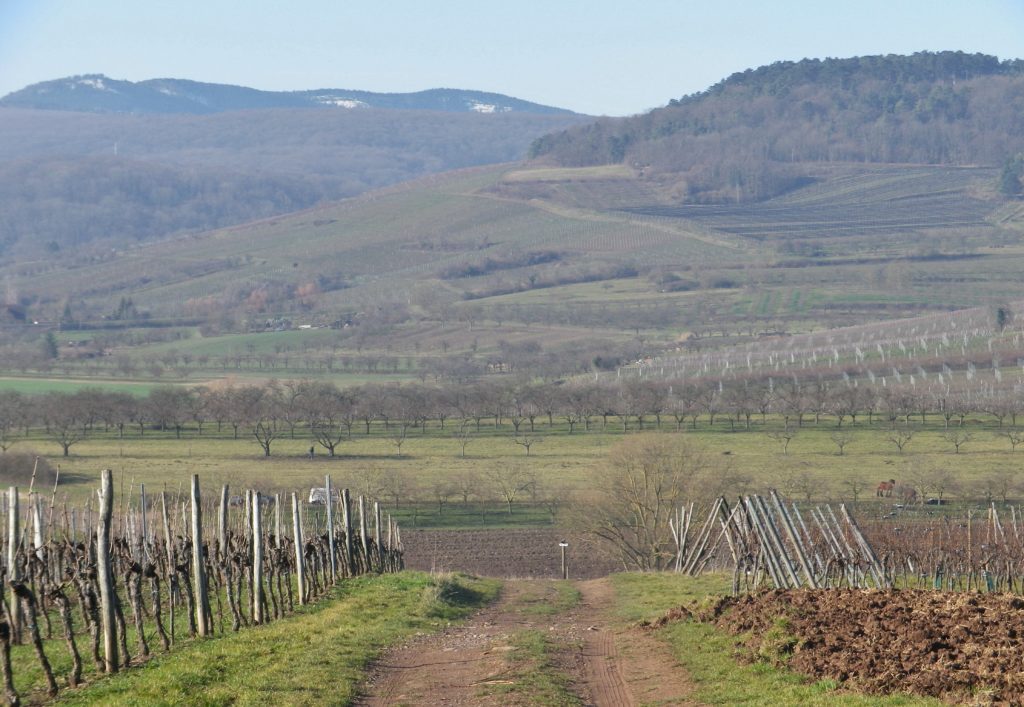
Emerging from the forest a couple of kilometers later, it was back up a hillside vineyard before coming down into Wangen, which sadly meant the close of the circuit. As hikes, history and gastronomy goes, it is a wonderful area, and one I will definitely visit again.
